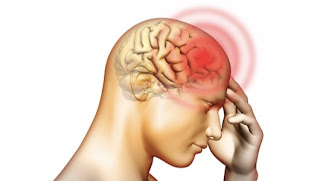Physical Examination for Meningitis
Meningitis is a disease caused by the inflammation of the protective membranes covering the brain and spinal cord known as the meninges. It is most often caused by infection (bacterial, viral, or fungal), but can also be produced by chemical irritation, subarachnoid haemorrhage, cancer and other conditions. The severity of illness and the treatment for meningitis differ depending on the cause. Thus, it is important to know the specific cause of meningitis.
Viral Meningitis
Enteroviruses, the most common cause of viral meningitis, are most often spread from person to person through fecal contamination (which can occur when changing a diaper or using the toilet and not properly washing hands afterwards).
Bacterial Meningitis
Bacterial meningitis is contagious. The bacteria are spread through the exchange of respiratory and throat secretions (i.e., kissing).
The most common symptoms of either form of meningitis include:
- Fever.
- Severe and persistent headache.
- Stiff and painful neck, especially when trying to touch the chin to the chest.
- Vomiting.
- Confusion and decreased level of consciousness.
- Seizures.
- Sluggishness, muscle aches and weakness, and strange feelings (such as tingling) or weakness throughout the body.
- Eye sensitivity and eye pain from bright lights.
- Skin rash.
- Dizzy spells.
Physical Examination for Meningitis
1. Activity / Rest
- Symptoms: feeling unwell (malaise), limitations posed condition.
- Signs: Ataxia, problems walking, paralysis, involuntary movement, general weakness, limitations in range of motion.
- Symptoms: the history of cardiology, such as endocarditis, some heart diseases Conginetal (brain abscess).
- Symptoms: increased blood pressure, decreased pulse rate, pulse pressure weight (associated with increased ICP and the influence of the vasomotor center). Tachycardia, distritmia (acute phase) as distrimia sinus (in meningitis)
- Signs: The existence of urinary incontinence and retention.
- Symptoms: Loss of appetite, difficulty swallowing (acute period)
- Signs: Anorexia, vomiting, poor skin turgor, dry mucous membranes.
- Signs: Dependence on all the needs of self-care (acute period)
- Symptoms: headache (may be the first symptom, and usually heavy), paresthesia, feels stiff in all the nerves are affected, loss of sensation (cranial nerve damage). Hyperalgesia / increased sensitivity (minimitis). Seizures arise (minimitis bacteria or brain abscess) disturbances in vision, such as monocular (early phase of multiple infections). Photophobia (on minimtis). Deafness (on minimitis / encephalitis) or maybe hypersensitivity to noise, the hulusinasi smell / touch.
- Signs:
- Mental status / level of consciousness; lethargy to severe confusion to coma, delusions and hallucinations / psychosis organic (encephalitis).
- Memory loss, difficulty in making decisions (can be a symptom of growing hidrosephalus communicant, following bacterial meningitis)
- Aphasia / difficulty in communicating.
- Eyes (size / pupil reaction): unisokor or do not respond to light (increased ICP), nystagmus (eyes move continuously).
- Upper eyelid ptosis falling). Characteristic facial (face), changes to the motor and sensory functions (cranial nerves V and VII exposed)
- Generalized seizures or locally (on the brain abscess). Temporal lobe seizures. Experiencing muscle hypotonia / flaccid paralysis (acute phase of meningitis). Spastic (encephalitis).
- Hemiparese hemiplegic (meningitis / encephalitis)
- Brudzinski's sign positive, positive Kernig sign, an indication of meningeal irritation (acute phase)
- Regiditas face (meningeal irritation)
- Deep tendon reflexes disturbed, positive Brudzinski
- Abdominal reflexes decreased.
7. Pain / Leisure
- Symptoms: headache (throbbing madly, frontal) may be exacerbated by tension neck / back stiffness, pain on ocular movement, throat pain.
- Signs: Looks kept awake, behavioral distraction / agitated crying / complaining.
8. Breathing
- Symptoms: A history of sinus or lung infections.
- Signs: Increased work of breathing (early stage), mental changes (lethargy to coma) and restless.
9. Security
- Symptoms:
- A history of upper respiratory tract infection or other infections, including sinus middle ear mastoiditis, dental abscess, abdominal or skin, lumbar function, surgery, fracture of the skull / head injury.
- Immunizations are just getting under way; exposed to meningitis, exposed to measles, herpes simplex, animal bites, foreign bodies carried away.
- Impaired vision or hearing
- Signs:
- Increased body temperature, diaphoresis, shivering
- General weakness; flaccid muscle tone or plastic
- Sensory disturbances.
ads

0 komentar: